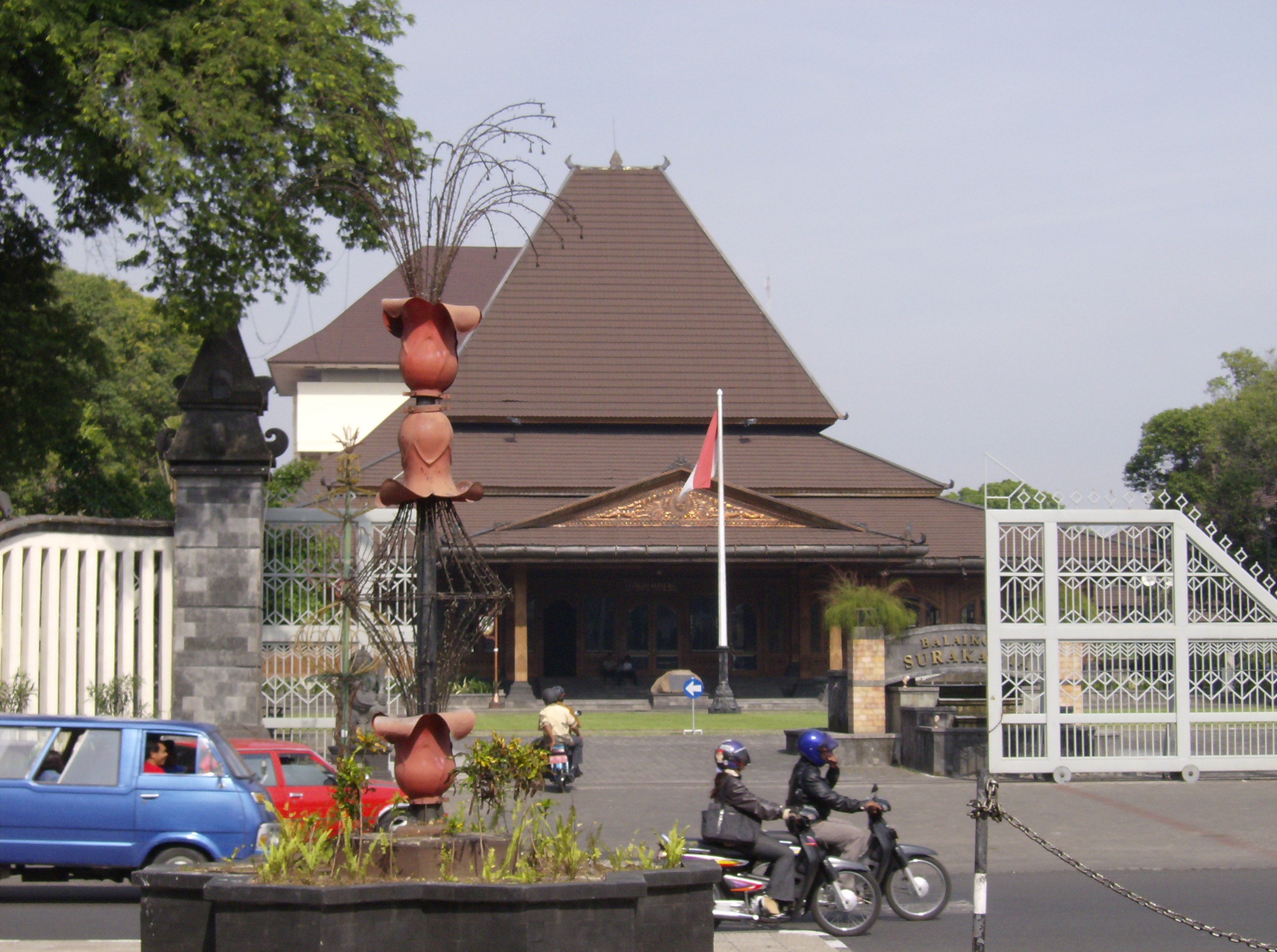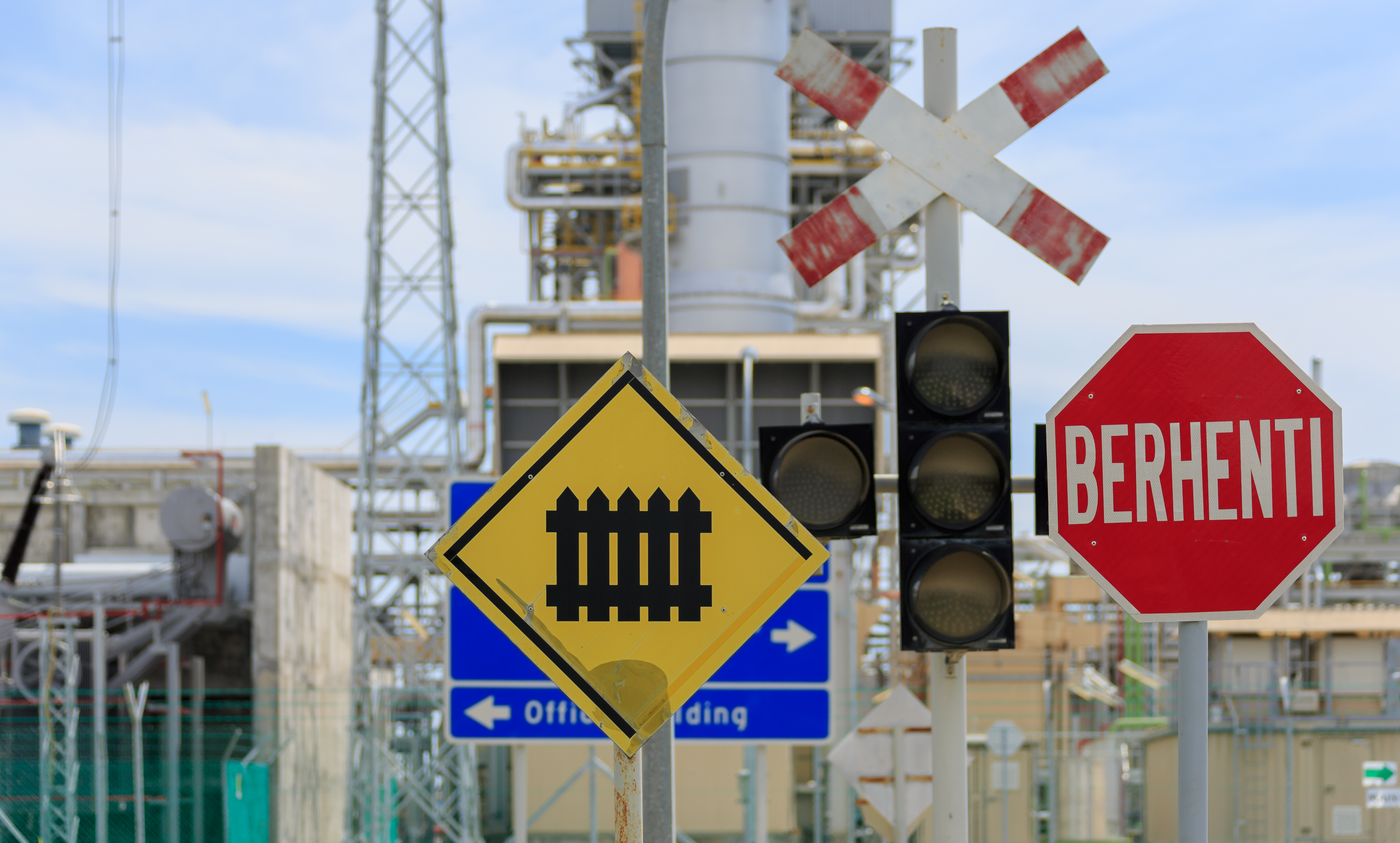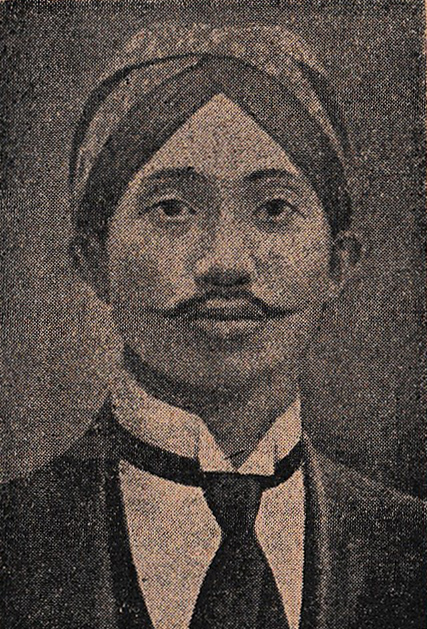|
Djawi-Hisworo
Djawi-Hisworo was a newspaper printed in Surakarta, Dutch East Indies from 1909 to 1919 in Malay and Javanese. It was considered the mouthpiece of the early Javanese self-improvement organization Boedi Oetomo. History Origin of Djawi-Hisworo The founder of ''Djawi-Hisworo'', Raden Martodharsono had worked in the court of the rulers of Surakarta ( Susuhunan) in the 1890s, but was arrested and jailed in Lombok in 1894 on charges of counterfeiting or forgery. He managed to escape to Sumatra where he was arrested once again and forced to serve his sentence there. After being released, he returned to Java, and ended up in Bandung. There, he ended up working as an editor for Tirto Adhi Soerjo at Medan Prijaji, a pioneering newspaper in the Indonesian National Awakening. He then returned to his home city of Surakarta and set about to found his own newspaper. The year it was founded is unclear; Ahmat Adam lists it tentatively as 1906, whereas Agung Dwi Hartanto and Takashi Shirais ... [...More Info...] [...Related Items...] OR: [Wikipedia] [Google] [Baidu] |
Surakarta
Surakarta ( jv, ꦯꦸꦫꦏꦂꦠ), known colloquially as Solo ( jv, ꦱꦭ; ), is a city in Central Java, Indonesia. The 44 km2 (16.2 sq mi) city adjoins Karanganyar Regency and Boyolali Regency to the north, Karanganyar Regency and Sukoharjo Regency to the east and west, and Sukoharjo Regency to the south. On the eastern side of Solo lies Solo River (Bengawan Solo). Its built-up area, consisting of Surakarta City and 59 districts spread over seven regencies ("Greater Solo Area", formerly Special Region of Surakarta), was home to 3,649,254 inhabitants as of 2010 census, around half million of which reside in the city proper. Surakarta is the birthplace of the current President of Indonesia, Joko Widodo. He served as Mayor of Surakarta from 2005 to 2012. History Hominid habitation in the region of Surakarta is evidenced from roughly one million years ago, the age of the " Java Man" skeleton found 80 kilometers upstream. Another famous early hominid from this area i ... [...More Info...] [...Related Items...] OR: [Wikipedia] [Google] [Baidu] |
Indonesian National Awakening
The Indonesian National Awakening ( id, Kebangkitan Nasional Indonesia) is a term for the period in the first half of the 20th century, during which people from many parts of the archipelago of Indonesia first began to develop a national consciousness as "Indonesians". In the pursuit of profits and administrative control, the Dutch imposed an authority of the Dutch East Indies on an array of peoples who had not previously shared a unified political identity. By the start of the 20th century, the Dutch had formed the territorial boundaries of a colonial state that became the precursor to modern Indonesia. In the first half of the 20th century, new organisations and leadership developed. Under its Ethical Policy, the Netherlands helped create an educated Indonesian elite. These profound changes amongst the indigenous Indonesian population are often referred to as the "Indonesian National Revival". They were accompanied by increased political activism and culminated in Indonesian ... [...More Info...] [...Related Items...] OR: [Wikipedia] [Google] [Baidu] |
Malay-language Newspapers
Malay (; ms, Bahasa Melayu, links=no, Jawi: , Rencong: ) is an Austronesian language that is an official language of Brunei, Indonesia, Malaysia, and Singapore, and that is also spoken in East Timor and parts of the Philippines and Thailand. Altogether, it is spoken by 290 million people (around 260 million in Indonesia alone in its own literary standard named "Indonesian") across Maritime Southeast Asia. As the or ("national language") of several states, Standard Malay has various official names. In Malaysia, it is designated as either ("Malaysian Malay") or also ("Malay language"). In Singapore and Brunei, it is called ("Malay language"). In Indonesia, an autonomous normative variety called ("Indonesian language") is designated the ("unifying language" or lingua franca). However, in areas of Central to Southern Sumatra, where vernacular varieties of Malay are indigenous, Indonesians refer to the language as , and consider it to be one of their regional lang ... [...More Info...] [...Related Items...] OR: [Wikipedia] [Google] [Baidu] |
Defunct Newspapers Published In Indonesia
{{Disambiguation ...
Defunct (no longer in use or active) may refer to: * ''Defunct'' (video game), 2014 * Zombie process or defunct process, in Unix-like operating systems See also * * :Former entities * End-of-life product * Obsolescence Obsolescence is the state of being which occurs when an object, service, or practice is no longer maintained or required even though it may still be in good working order. It usually happens when something that is more efficient or less risky r ... [...More Info...] [...Related Items...] OR: [Wikipedia] [Google] [Baidu] |
Javanese-language Newspapers Published In The Dutch East Indies
Javanese (, , ; , Aksara Jawa: , Pegon: , IPA: ) is a Malayo-Polynesian language spoken by the Javanese people from the central and eastern parts of the island of Java, Indonesia. There are also pockets of Javanese speakers on the northern coast of western Java. It is the native language of more than 98 million people. Javanese is the largest of the Austronesian languages in number of native speakers. It has several regional dialects and a number of clearly distinct status styles. Its closest relatives are the neighboring languages such as Sundanese, Madurese, and Balinese. Most speakers of Javanese also speak Indonesian for official and commercial purposes as well as a means to communicate with non-Javanese-speaking Indonesians. There are speakers of Javanese in Malaysia (concentrated in the West Coast part of the states of Selangor and Johor) and Singapore. Javanese is also spoken by traditional immigrant communities of Javanese descent in Suriname, Sri Lanka and Ne ... [...More Info...] [...Related Items...] OR: [Wikipedia] [Google] [Baidu] |
Malay-language Newspapers Published In The Dutch East Indies
Malay (; ms, Bahasa Melayu, links=no, Jawi: , Rencong: ) is an Austronesian language that is an official language of Brunei, Indonesia, Malaysia, and Singapore, and that is also spoken in East Timor and parts of the Philippines and Thailand. Altogether, it is spoken by 290 million people (around 260 million in Indonesia alone in its own literary standard named "Indonesian") across Maritime Southeast Asia. As the or ("national language") of several states, Standard Malay has various official names. In Malaysia, it is designated as either ("Malaysian Malay") or also ("Malay language"). In Singapore and Brunei, it is called ("Malay language"). In Indonesia, an autonomous normative variety called ("Indonesian language") is designated the ("unifying language" or lingua franca). However, in areas of Central to Southern Sumatra, where vernacular varieties of Malay are indigenous, Indonesians refer to the language as , and consider it to be one of their regional lang ... [...More Info...] [...Related Items...] OR: [Wikipedia] [Google] [Baidu] |
Surabaya
Surabaya ( jv, ꦱꦸꦫꦧꦪ or jv, ꦯꦹꦫꦨꦪ; ; ) is the capital city of the Indonesian province of East Java and the second-largest city in Indonesia, after Jakarta. Located on the northeastern border of Java island, on the Madura Strait, it is one of the earliest port cities in Southeast Asia. According to the National Development Planning Agency, Surabaya is one of the four main central cities of Indonesia, alongside Jakarta, Medan, and Makassar. The city has a population of 2.87 million within its city limits at the 2020 census and 9.5 million in the extended Surabaya metropolitan area, making it the second-largest metropolitan area in Indonesia. The city was settled in the 10th century by the Kingdom of Janggala, one of the two Javanese kingdoms that was formed in 1045 when Airlangga abdicated his throne in favor of his two sons. In the late 15th and 16th centuries, Surabaya grew to be a duchy, a major political and military power as well ... [...More Info...] [...Related Items...] OR: [Wikipedia] [Google] [Baidu] |
Arab Indonesians
Arab Indonesians ( ar, عربٌ إندونيسيون) or ''Hadharem'' (; sing., ''Hadhrami'', ), informally known as Jama'ah, and until the 20th century known as Codjas or Kodjas, note the work was also published in the Hague and Utrecht simultaneously by others. are Indonesian citizens of mixed Arab – mainly Hadhrami – and Indonesian descent. The group also includes those of Arab descent from other Middle Eastern Arabic speaking nations. Restricted under Dutch East Indies law until 1919, the community elites later gained economic power through real estate investment and trading. Currently found mainly in Java, especially West Java and South Sumatra, they are almost all Muslims. The official number of Arab and part Arab descent in Indonesia was recorded since 19th century. The census of 1870 recorded a total of 12,412 Arab Indonesians (7,495 living in Java and Madura and the rest in other islands). By 1900, the total number of Arabs citizens increased to 27,399, then 44 ... [...More Info...] [...Related Items...] OR: [Wikipedia] [Google] [Baidu] |
Tjokroaminoto
Raden Mas Hadji Oemar Said Tjokroaminoto (16 August 1882 – 17 December 1934), better known in Indonesia as H.O.S. Tjokroaminoto, was an Indonesian nationalist. He became one of the leaders of the Islamic Trade Union ( id, Syarekat Dagang Islam), founded by Samanhudi, which became Sarekat Islam, which they both co-founded. Early life Tjokroaminoto was born the second of twelve children, in the Ponorogo Regency as the son of RM. Tjokroaminoto (district chief of Kleco), grandson of RMA. Tjokronegoro (regent of the Ponorogo Regency), and great-grandson of Kyai Bagus Kasan Besari of Tegalsari ''pesantren''. According to his genealogy, his education was directed towards civil service. After graduating in 1902 from OSVIA ( nl, Opleiding School Voor Inlandsche Ambtenaren), a school for indigenous civil servants, in Magelang, the then-highest civil servant education institution, he worked as one in Ngawi for three years from 1902 to 1905). He moved to Surabaya, where he met Samanhu ... [...More Info...] [...Related Items...] OR: [Wikipedia] [Google] [Baidu] |
Prophet Muhammad
Muhammad ( ar, مُحَمَّد; 570 – 8 June 632 CE) was an Arab religious, social, and political leader and the founder of Islam. According to Islamic doctrine, he was a prophet divinely inspired to preach and confirm the monotheistic teachings of Adam, Abraham, Moses, Jesus, and other prophets. He is believed to be the Seal of the Prophets within Islam. Muhammad united Arabia into a single Muslim polity, with the Quran as well as his teachings and practices forming the basis of Islamic religious belief. Muhammad was born approximately 570CE in Mecca. He was the son of Abdullah ibn Abd al-Muttalib and Amina bint Wahb. His father Abdullah was the son of Quraysh tribal leader Abd al-Muttalib ibn Hashim, and he died a few months before Muhammad's birth. His mother Amina died when he was six, leaving Muhammad an orphan. He was raised under the care of his grandfather, Abd al-Muttalib, and paternal uncle, Abu Talib. In later years, he would periodically seclude h ... [...More Info...] [...Related Items...] OR: [Wikipedia] [Google] [Baidu] |
Sarekat Islam
Sarekat Islam or Syarikat Islam ( 'Islamic Association' or 'Islamic Union'; SI) was an Indonesian socio-political organization founded at the beginning of the 20th Century during the Dutch colonial era. Initially, SI served as a cooperative of Muslim Javanese batik traders to compete with the Chinese-Indonesian big traders. From there, SI rapidly evolved into a nationalist political organization that demanded self-governance against the Dutch colonial regime and gained wide popular support. SI was especially active during the 1910s and the early 1920s. By 1916, it claimed 80 branches with a total membership of around 350,000. SI was eventually embroiled in an internal conflict between the Islamic moderates and the radical communist members who urged firmer anti-colonialist and anti-capitalist actions. In 1921, the organization was split and communist members founded a separate entity known as the Sarekat Islam Merah (Red Islamic Association) which was absorbed into the Commun ... [...More Info...] [...Related Items...] OR: [Wikipedia] [Google] [Baidu] |





